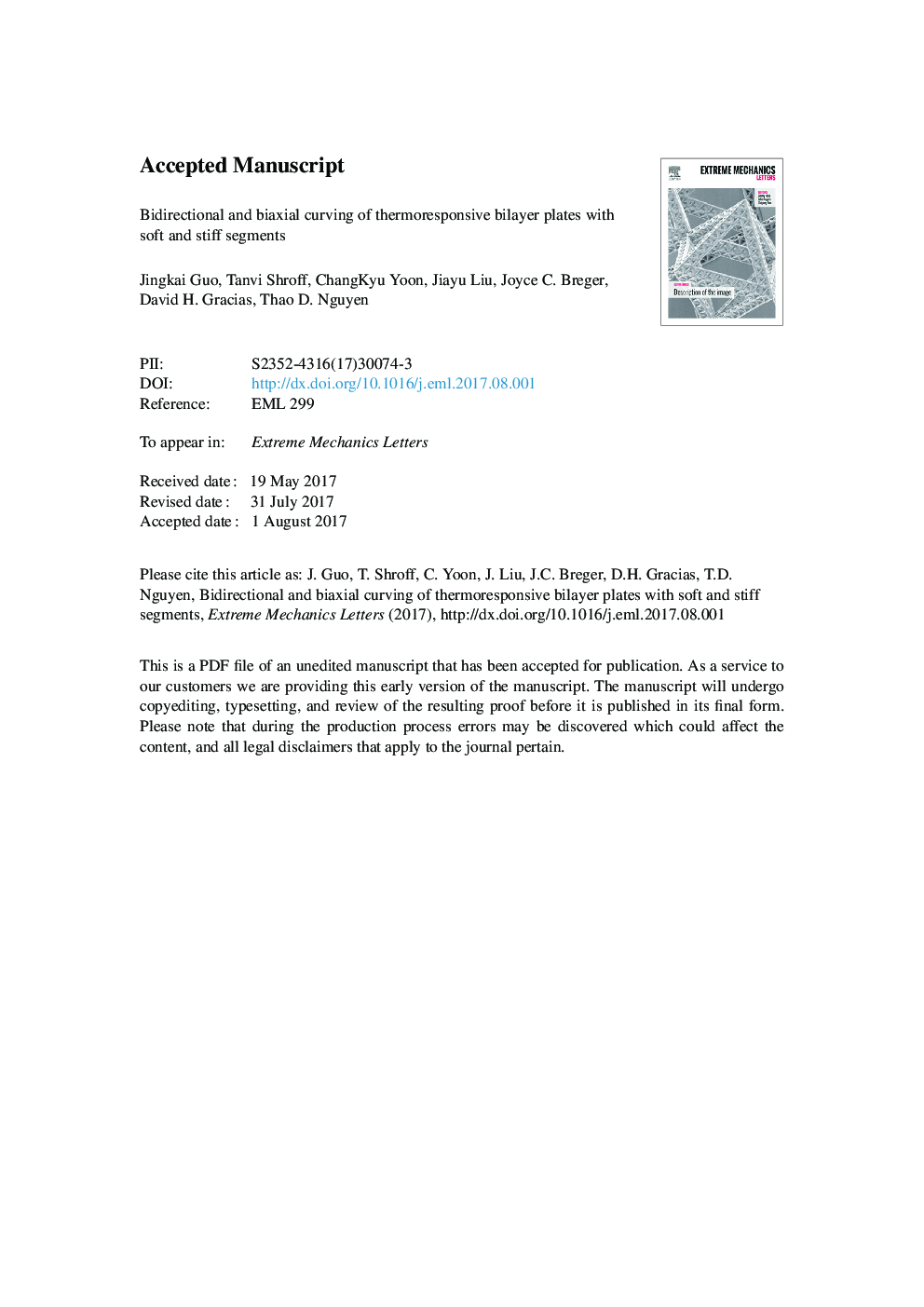| Article ID | Journal | Published Year | Pages | File Type |
|---|---|---|---|---|
| 5014440 | Extreme Mechanics Letters | 2017 | 20 Pages |
Abstract
Curved bilayer plates with soft and stiff segments are widely observed in nature, such as plant cell walls, insect exoskeletons and reptile skins. We report an unusual biaxial and bidirectional bending of microfabricated bilayer plates composed of a swellable, photopolymerized poly(N-isopropylacrylamide-co-acrylic acid) (pNIPAM-AAc) layer and a regular array of SU-8, a stiff, non-swellable epoxy. Hydrogels such as pNIPAM-AAc exhibit large and reversible swelling in water in response to a temperature change through the lower critical solution temperature (LCST). The stimuli responsive behavior was harnessed in the composite structure containing materials with mismatched swelling and elastic properties to produce actuation and mechanical motion. The structure undergoes reversible bending along two different axes in response to a temperature cycle through the LCST. Cooling the patterned bilayer structure leads to bending upwards about one axis, while heating leads to bending downwards about a different axis, 90o from the first. To understand the mechanism of this biaxial bending behavior, we developed a finite element model of the patterned bilayer structure. A constitutive model that combined the hyperelastic and swelling behavior was used to describe the thermoresponsive hydrogel. The model was applied to investigate the effects of geometric factors of the patterned bilayer on the bending behavior of the composite structure.
Related Topics
Physical Sciences and Engineering
Energy
Energy Engineering and Power Technology
Authors
Jingkai Guo, Tanvi Shroff, ChangKyu Yoon, Jiayu Liu, Joyce C. Breger, David H. Gracias, Thao D. Nguyen,
